#artist is aelbert cuyp
Text


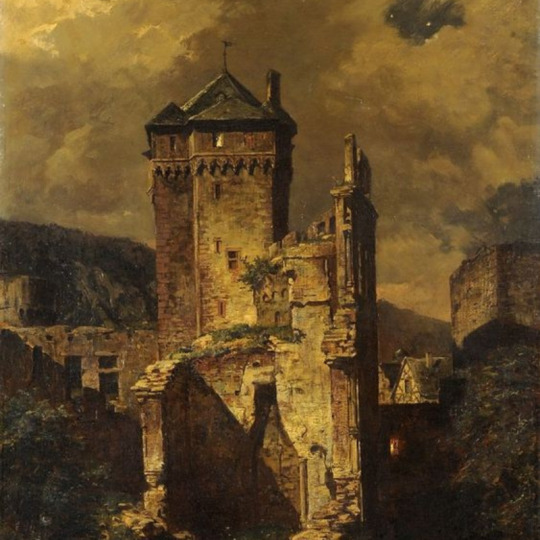

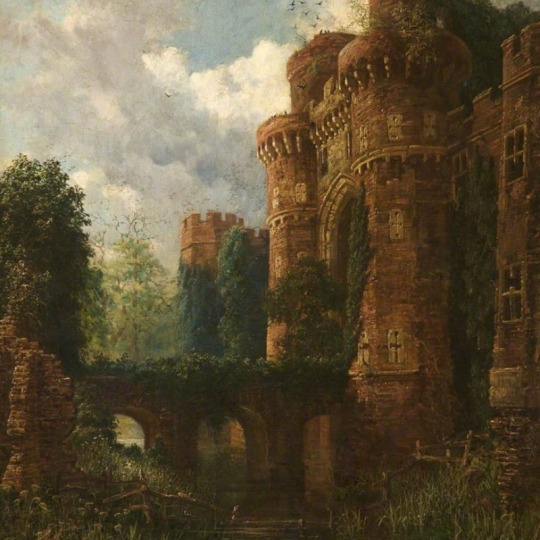


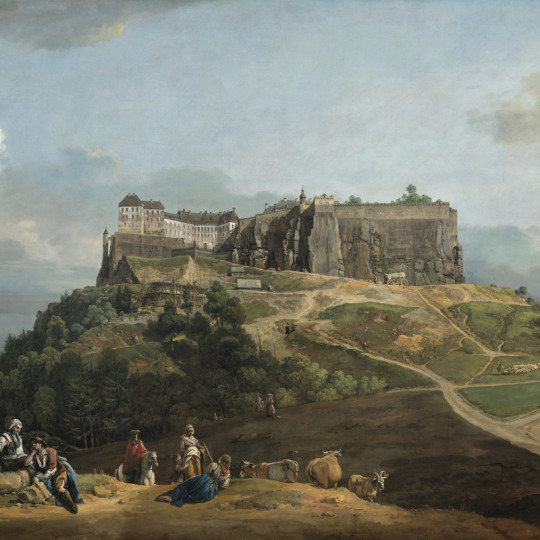

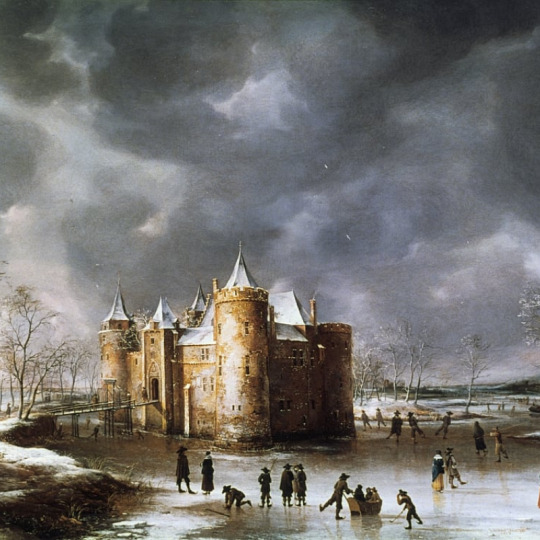

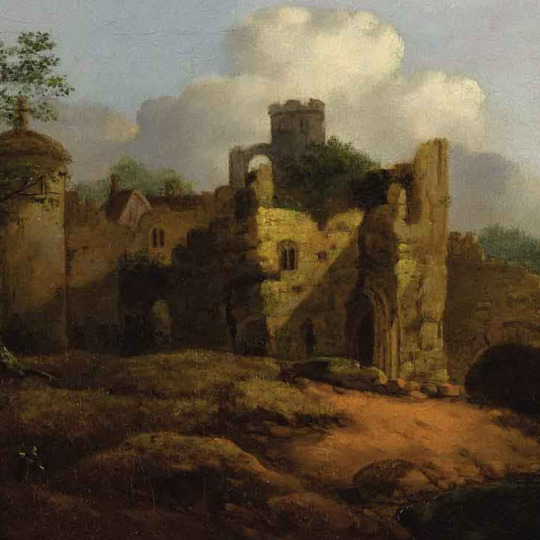


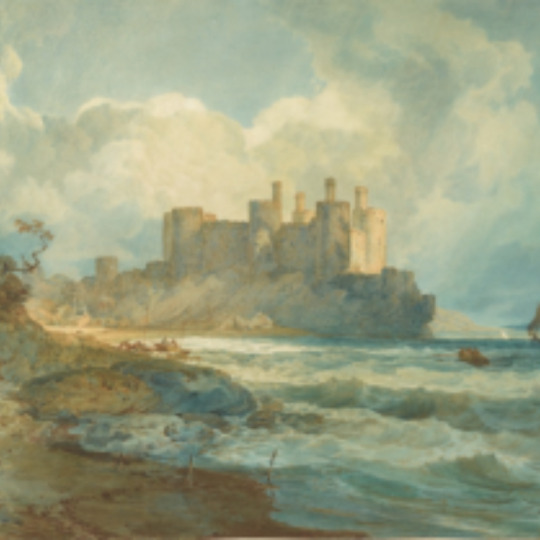
castles + art
#artist is henrich adolf valentin hoffmann#artist is carl hilgers#artist if fritz von wille#dont know artist but the painting is of neuschwanstein castle#artist is rayner samuel#cant find artist#artist is emanuel murant#artist is bernardo bellotto#artist is aelbert cuyp#artist is jan beerstraaten#artist is thomas gainsborough#artist is henrick averkamp#artist is barolomeo montagna#artist is jmw turner#art history#castles#art
1K notes
·
View notes
Text
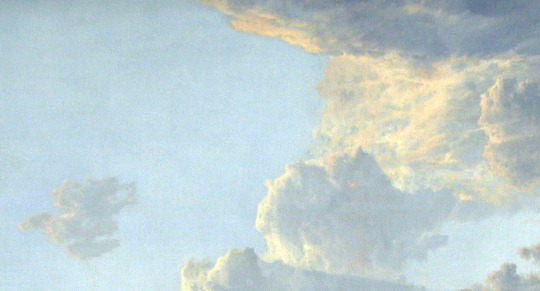
Aelbert Cuyp (Dutch, 1620–1691)
detail of The Maas at Dordrecht (c. 1650)
oil, 114.9 × 170.2 cm
81 notes
·
View notes
Photo

Aelbert Jacobszoon Cuyp (attributed to), Selfportrait as a boy, ca. 1650, oil painting, 37 x 30 cm, Museum Bredius, The Hague
Despite the work’s title suggested by the museum itself and although the sitter is identified with Aelbert Cuyp, it seems to be doubtful whether it is an actual self-portrait or maybe was painted by a different artist.
Source: Wikimedia Commons | Museum Bredius
#art#artwork#painting#oil painting#baroque#baroque art#baroque painting#Dutch art#Dutch painting#aelbert cuyp#aelbert jacobszoon cuyp#portrait#artist portrait#artist's portrait#17th century#historical fashion#historical menswear#baroque fashion
18 notes
·
View notes
Text
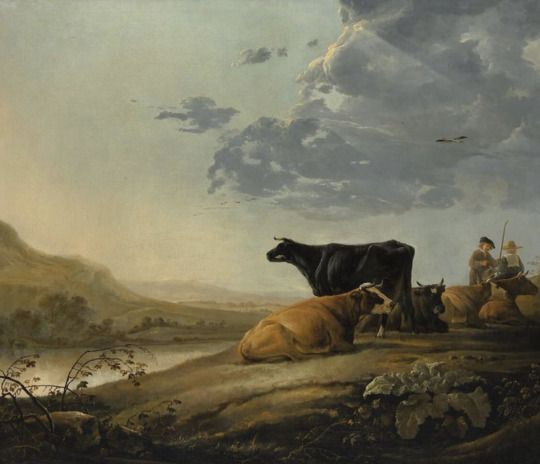
Aelbert Cuyp (Dutch, 1620–1691)
Young Herdsmen with Cows
1 note
·
View note
Text

Portrait of a man (1660) “Oil paint, canvas, 37 x 30 cm” [Museum Bredius, The Hague, The Netherlands] — Unknown artist (Dutch; 17th century)
Former attribution to Aelbert Cuyp (1620-1691) or Abraham van Calraet (1642-1722
According to Rudi Ekkart (RKD), this could be a French painting.
2 notes
·
View notes
Text
Cuyp's Young Herdsmen with Cows
Welcome to Long Live Bat Art, the podcast for art lovers who don’t see art as much as they want to. My name is Sydney and thank you for taking this slow tour through an art gallery with a casual art lover. Today, I’ll be talking about Young Herdsmen with Cows by Aelbert Cuyp. I hope you enjoy.
Aelbert Jacobszoon Cuyp was born on October 20, 1620 in Dordrecht, which boasts the claim to fame as being the oldest city in Holland. His father, Jacob Gerritszoon Cuyp, was also a painter. And I’m actually sad that it took me this long to figure out that ‘szoon’ might mean that your middle name is your father’s name plus ‘szoon,’ like how your last name in English used to be your profession or father’s name with 'son'. Think of it as ‘Jacobson.’
Cuyp comes from a family of artists- his uncle Benjamin and grandfather Gerrit were stained glass designers. Because of their work, Cuyp inherited a ‘considerable fortune.’ But how much he inherited is somewhat of a mystery- even my nemesis Arnold Houbraken didn’t touch much on Cuyp’s artistic career, even though he was the sole authority on the man for a hundred years. I don’t know about you, but if I was the sole authority of something, I might give it a bit more research.
Cuyp’s works were mainly produced between 1639 and 1660. He married a woman named Cornelia Bosman on July 30 in 1658, which coincided with the tail end of his career. Most biographers blame her for ending his career, but it could be that Cuyp decided to focus on his wife and being a family man for his daughter on his own.
Cuyp’s career can be broken into 3 periods, based on what artist was believed to have influenced him. The unimaginative names of his periods are his ‘van Goyen phase,’ based on Jan van Goyen, his ‘Both’ stage of Jan Both, and his father’s influence. I don’t know if historians called it ‘Cuyp’s Cuyp phase,’ but if they did it would have been funny. He mainly learned color from van Goyen, light from Jan Both, and form from his father.
You might recognize Jan van Goyen’s name from episode 2- he was a teacher and later father-in-law of Jan Steen. Cuyp may have encountered van Goyen’s work around 1640. Historians think that because two of Cuyp’s paintings, both dated 1659, show that Cuyp hadn’t yet discovered his style. Paintings in 1641 that he collaborated on with his father where Aelbrecht did the landscape and Jacob the figures that are accepted as ‘van Goyenesque.’ The colors and brushstrokes are similar in appearance to van Goyen’s Dunes he painted in 1629. The brushstrokes are generally accepted as being precursors to impressionism, which is known for visible brushstrokes.
Jan Both lended his light source to Cuyp. Instead of having the light be at a right angle, it instead emanates from the background. That change meant that new degrees of depth could be achieved. Cuyp was one of the first Dutch artists to latch onto the technique that Jan Both brought back from Rome. Cuyp used the technique for sunrises and sunsets.
Cuyp’s influence from his father was less time-based, instead woven throughout his entire career. Instead of being a pure landscape painter, he learned figures from his portrait painter father. Both father and son had rather fluid styles, each taking inspiration from the other, which frustrates historians and pleases me. It’s a lovely idea, the fact that you can take inspiration from someone that was inspired by you and have it be playful. You are not stagnant, nor should you be. The fact that you’re a human means you are constantly growing, and growing means change.
Unlike some of the artists we’ve covered this season, Cuyp often signed his works. While he dated some of them, the majority are left undated. Unfortunately, another artist who did similar landscapes- Abraham Calraet- had the same initials that could be confused with Cuyp’s. So some of Calraet’s paintings could be misattributed to Cuyp, and vice versa. Calraet was also an avid follower of Cuyp, which adds to the confusion. Cuyp also had a workshop, and artists would add his initials to paintings he never touched in reference to who the artist’s teacher was. In fact, Hofstede de Groot cataloged 800 works to Cuyp in the early 1900s. However, by 2002 the number had diminished greatly to 45 paintings and the same number of drawings.
On to the painting.
The painting depicts a grassy hill with a river on the left and below. On the hill are five cows, all with horns. The cow closest to the viewer is brown with a white face except for its cheeks. It’s lying down and is lit from the left and above. The next cow is black and standing, looking over the water. It has a small patch of white along its left jawline, which is facing the viewer. It also has a low white sock marking on its back left leg. Its bones are slightly more prominent than the closer cow- its hips are pronounced and you can see the dip before its shoulder blades, along with its ribs. The next cow is also black. It has a white marking between its eyes. It’s lying down and almost facing the viewer. It has a light gray marking around its nose. The next cow is a lighter shade of brown than the first one, and its face is entirely white. The white cuts off in a line down from just in front of its horns. It’s laying down the same way as the others, with its tail and lugs tucked under itself. The last cow is also lying down and is a rich brown, almost red color.
Behind the last cow are two young men. One is wearing a straw hat that looks like the stereotypical farmer’s hat, and the other is wearing a black beret, longer on the right side. The young man wearing the straw hat is wearing a blue shirt with a square white covering from his head down his shoulder blades. The covering doesn’t go over his arms. His legs are obscured by the cows, but he seems to be sitting on a rock. The other young man is standing and holding a staff in his left hand. He’s facing the other man and talking with him, using his other hand to point at him, emphasizing whatever he’s saying. He’s wearing a long brown garment with a white shirt underneath you can just see the collar of. His legs are also obscured by the cows.
There’s another straw hat next to the first man- whether it’s the other man’s or a third man sitting on the ground I can’t tell.
In the foreground is low vegetation- thin branches with small ivy-like leaves and a larger but still low plant with large leaves on the right. The larger plant’s leaves are spreading from the center like a lily’s petals. There are five of them, all rippled at the edge. There’s a rock among the branches on the left.
In the background, beyond the river, is another piece of land. It’s more mountainous with trees along the bank. The sky is light. It’s blue on the upper right corner and a subtle orange transitioning into pale yellow beyond the mountains, like the sun is rising. It has a cloud along the right side, above the men and cows. The cloud is light gray and broken up, showing the sky in parts. A sunbeam is cutting diagonally from the middle of the top edge of the painting and towards the bottom right of the cloud. There’s a bird, maybe a white goose, flying overhead.
Now for my thoughts.
I like the lighting in this piece- it’s soft and golden. There’s a wide shaft of light coming through the clouds and it’s just absolutely gorgeous. The cows seem healthy and robust, at least from an admittedly never-seen-a-cow-in-real-life person. And the way the black cow is looking over the scenery, it’s almost like it’s admiring the view as well. I know bears can do that- there’s been instances of people seeing bears sitting back and enjoying beautiful things. Humans aren’t the only ones who can admire beauty for the sake of it.
The whole scene is just a peaceful one. The cows are relaxed, the herdsmen are chatting. I don’t know what drew me to this piece, I really don’t. It has nothing to do with my life- I’ll probably never bring cows out to a hilly area to graze as long as I live. But that doesn’t mean I can’t appreciate the simplicity of that idea. Yes, herding is probably a rough life- moving animals that are much larger and stronger than you is probably stressful- but right now, animals and humans are relaxed. And they do as most animals and humans do when relaxed- they both rest their legs and humans talk.
The fact that this scene is the one Cuyp chose to be his subject might be a practical one- he could have had more access to herdsmen or life experience to draw from- but I like to think that there’s something deeper there as most artists do choose with hidden agendas. Maybe Cuyp chose this view because it’s a common one, maybe he chose it to show others what his life or those of his subjects are. Maybe he wasn’t even aware of it. I know I’ve made pieces of art that I thought were interesting for different reasons than other people that saw them. The person experiencing the art and the artist often have very different views. The artist might have created from their own experience, but the viewer also brings their life experience with them when they view the art. My life experience is vastly different from Cuyp’s and his audience’s, so I probably see it very differently.
But that’s fine- you don’t have to precisely ‘get’ the artist’s vision. You might look at a piece of art and see something the artist never intended, or they might create something you’ll never think of. The artist and the viewer have both a symbiotic and antagonistic relationship. Symbiotic because there can be no art without an audience and vice versa. Antagonistic because often artists will create something that the audience won’t see at first, or maybe even ever. But that doesn’t have to be a bad thing. You can’t see anything other than what your own experiences let you, but that doesn’t mean you shouldn’t try.
So that’s my challenge to you- try to see from another person’s experience today. I know, I just said that was impossible, but it’s a worthy exercise. As one of my favorite books- To Kill A Mockingbird- advises, try to climb in his skin and walk around in it for a while. Unless you’re Hannibal Lecter, I don’t suggest that literally. In fact, even if you are Hannibal Lecter, I strongly suggest you don’t do that literally.
So try to see life from their perspective. A family member, a friend, anyone. A stranger, even. And, if you can, try to pick someone vastly different from yourself. I don’t mean pick someone rich and famous, that will bring you nothing but envy and depression. Nor do I mean pick someone from the very bottom of the so-called social hierarchy. That will bring you nothing but pretentiousness. Try someone more on your level.
But trying to see from another person's perspective, to remember that you are not the center of the universe and not everything should revolve around you, is a humbling experience people should undertake more often. You might be the center of your own universe, but so is everyone else. There are no background characters in life, everyone is the main character in their own story. And if you remember that there’s no such thing as an ensemble role in life, I would bet you’d appreciate your own a lot more.
If you liked this episode of Long Live Bat Art, please consider telling a friend and reviewing to help the podcast grow. A link to the transcript of this episode is available in the show notes below. And you can follow me on Twitter at Long Live Bat Art and tumblr at tumblr dot com forward slash Long Live Bat Art. That’s Long Live B-A-T Art. Thank you for listening to this episode, and I will see you in two weeks.
0 notes
Text
#FineArtFriday: Dordrecht Harbor by Moonlight by Aelbert Cuyp 1643
Artist: Aelbert Cuyp (1620–1691)
Title: Dordrecht Harbor by Moonlight
Genre: landscape art
Date: 1643
Medium: oil on panel
Dimensions: height: 76.5 cm (30.1 in); width: 106.5 cm (41.9 in)
Collection: Wallraf–Richartz Museum
What I like about this scene:
Aelbert Cuyp’s paintbrush tells a story. But what kind of story is he showing us?
A ship is docked beside a mill at Dordrecht Harbor. Night has…

View On WordPress
#17th century landscape paintings#Dordrecht Harbor by Moonlight by Aelbert Cuyp 1643#Dort#Fine Art Friday
0 notes
Text
The Passage Boat
Aelbert Cuyp (Dutch, 1620-1691)
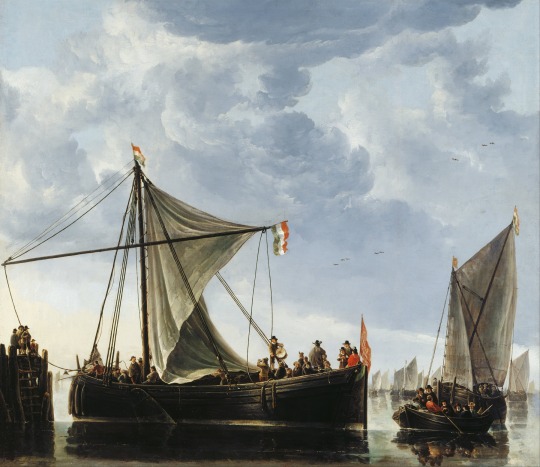
Aelbert Jacobsz. Cuyp was one of the leading Dutch Golden Age painters, producing mainly landscapes. The most famous of a family of painters, the pupil of his father Jacob Gerritsz. Cuyp (1594–1651/52), he is especially known for his large views of Dutch riverside scenes in a golden early morning or late afternoon light.
Cuyp was born in Dordrecht on 20 October 1620, and died there on 15 November 1691. Known as the Dutch equivalent of Claude Lorrain, he inherited a considerable fortune. His family were all artists, with his uncle Benjamin and grandfather Gerrit being stained glass cartoon designers. Jacob Gerritsz Cuyp, his father, was a portraitist. Cuyp's father was his first teacher and they collaborated on many paintings throughout his lifetime.
Little is known about Aelbert Cuyp's life. Even Arnold Houbraken, a noted historian of Dutch Golden Age paintings and the sole authority on Cuyp for the hundred years following his death, paints a very thin biographical picture. His period of activity as a painter is traditionally limited to the two decades between 1639 and 1660, fitting within the generally accepted limits of the Dutch Golden Age's most significant period, 1640–1665. He is known to have been married to Cornelia Bosman in 1658, a date coinciding so directly with the end of his productivity as a painter that it has been accepted that his marriage played a role in the end of his artistic career. The year after his marriage Cuyp became the deacon of the reformed church. Houbraken recalled that Cuyp was a devout Calvinist and the fact that when he died, there were no paintings of other artists found in his home.
0 notes
Photo
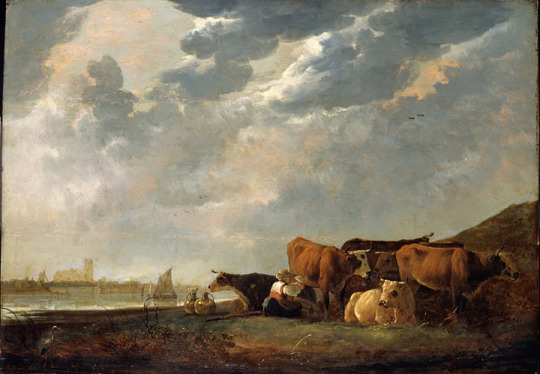
Aelbert Cuyp (1620-1691) "Cattle near the Maas, with Dordrecht in the distance" Oil on panel Dutch Golden Age Located in the Dulwich Picture Gallery, Lomdon, England
#paintings#art#artwork#landscape painting#cows#aelbert cuyp#oil on panel#fine art#dutch golden age#dulwich picture gallery#museum#london england#dutch artist#cattle#cow#clouds#animals#animal portrait#1600s#17th century
84 notes
·
View notes
Photo

Portrait of Anna Blocken, Aelbert Cuyp, 1649, Minneapolis Institute of Art: Paintings
This painting was the pendant, or partner, to a male portrait in the National Gallery, London, so we can conclude that it was originally an octagon. According to an inscription on the paintings, they were both created in 1649, when the woman was 49 years old and the man was 56. The only upper-crust couple from the city of Dordrecht whose birth years are known to correspond is Anna Blocken and her husband, Cornelis van Someren, a prominent physician. This identification is supported by the fact that the couple had connections to several of the artist’s other patrons. Cornelis died the same year that his portrait was made. Anna lived until 1671. Conservation of this picture was made possible by a generous contribution from Paula Vesely through the Art Champions program.
Size: 26 1/2 x 22 1/4 x 5/16 to 3/8 in. (67.31 x 56.52 x 0.79 cm) (panel)
Medium: Oil on panel
https://collections.artsmia.org/art/731/
7 notes
·
View notes
Photo

X-radiograph(s) of "Horse", Harvard Art Museums: Photographs
X-Radiograph Description: X-Radiograph Burroughs Number: 3908 X-Radiograph(s) of: Artist: Cuyp, Aelbert, Dutch, 1620-1691 Title: Horse Owner: Harvard University Art Museums Object Number: 1960.742 Harvard Art Museums/Straus Center for Conservation and Technical Studies, Alan Burroughs Collection of X-Radiographs
https://www.harvardartmuseums.org/collections/object/347482
1 note
·
View note
Text
Loving Vincent
‘One can speak poetry just by arranging colours well, just as one can say comforting things in music.’
Vincent van Gogh
I imagine that not many of you know this but I completed a Masters degree a couple of years ago in Philosophy (of Art), specifically in the history of art and how what we value in works of art has changed over time, with particular focus on Dutch Art. What started out as an interest in the work of Aelbert Cuyp very quickly found itself fascinated by Vincent van Gogh, not necessarily because of his oh so famous works such as Starry Night and Sunflowers but more because I wanted to know who this character was who emerged during Impressionism in a very different way to other more classic members such as Monet and Renoir.
I have been reading a lot on van Gogh at the moment, visiting exhibitions etc. and I think there is enough documented on how unhappy he was, but let us look at the little happiness we can take from it all. Vincent lived a very sad and lonely life, struggling to find himself for much of it. From the tender age of sixteen he worked as an assistant in an art gallery for seven years, but this was not what suited him and he did not suit it. He later worked as a teacher in England, as well as in a bookshop, learning languages such as Latin and Greek in Amsterdam. He not only struggled to find himself as a person but also as an artist, which is evident in the change in his style of painting over the years.
It was the movement of Impressionism that moved him particularly, which was emerging in French society at the time. Artists that particularly moved him included Monet, Renoir, Gauguin, Cézanne, and Ernest Quost’s Garden of Hollyhocks. During the years of 1886 and 1887, Vincent’s style can be seen to be very similar to that of the more traditional impressionists, including his painting Montmartre: Behind Le Moulin de la Galette 1887 (pictured below). It was not just the paintings that he admired during this time, but the artists themselves and Vincent longed to have friends who would inspire him and who he could inspire also – to start a little circle of artists. He hoped that those joining him in this circle would be those he admired most, namely impressionist painters of the time, sadly nothing came of this.
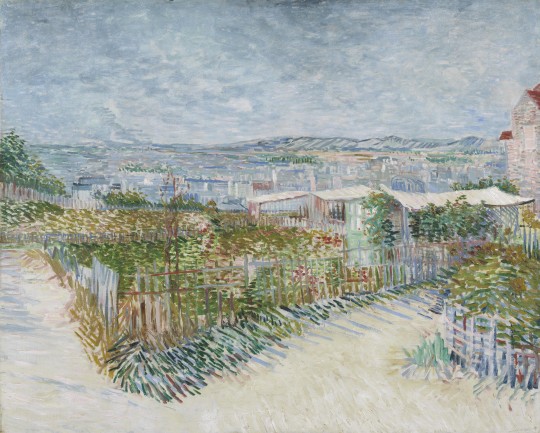
It was in the last moments of his life and in death that Vincent found happiness. Following unsuccessful attempts at selling his work and several mental breakdowns, Vincent’s brother (Theo) wrote to him on 16th July 1889 with great news, that in January 1890 there would be an exhibition in Brussels called Les Vingt (The Twenty) that would feature twenty avant-garde artists of the time, of which Vincent was invited to be one. Not only was this the first time that he would be asked to exhibit his work but he would have the opportunity of displaying his work alongside those he admired and longed to be with, including Renoir, Cézanne and Toulouse-Lautrec. As much as we know of his unhappiness, it is important to note that during Vincent’s last days, he did begin to get recognition for his work. Although Les Vingt gained mixed reviews, both by other artists and the public, many did enjoy his work.
A month after the closing of Les Vingt, Vincent was given another opportunity to showcase his work, this time in Paris in March 1890 as the Société des Artistes Indépendants, in which he put ten works up for exhibition. At this exhibition, the master of the impressionists Monet described Vincent’s work as being ‘the best in the exhibition’, Theo told Vincent.
Tragically, this recognition is not enough to pull Vincent out of the state he is in and he ultimately shoots himself in the stomach, managing to make his way back to his bedroom where he dies two days later, with his brother by his side. Theo writes to his wife Jo that Vincent’s last words include that ‘this is how I wanted to go & it took a few moments & then it was over & he found peace he hadn’t been able to find on earth’. At his funeral, there were twenty attendees, half of which were artists. There were his canvases hung all around him, decorating the room like a halo.
Vincent’s friend Bernard notes that ‘the coffin was covered in a simple white cloth and surrounded with masses of flowers, the sunflowers that he loved so much, yellow dahlias, yellow flowers everywhere.’ Theo also writes to his wife, once more, that ‘there were masses of bouquets and wreaths. Dr Gachet arrived first with a magnificent bunch of sunflowers because he [Vincent] loved them so much’.
Shortly after the funeral, Vincent’s memory was already largely engrained in the minds of many. Quost who painted the Garden of Hollyhocks, which Vincent loved so much, gifted this to Theo with a note on the back that read ‘To Theo van Gogh. This painting that my friend Vincent loved so much.’ Sadly, Theo too passed away only six months after Vincent’s death, having been stricken with Syphilis. In 1914, Theo’s remains were taken to be buried with his brother, having played such a large part in Vincent’s growth and life as an artist and man.
The van Gogh’s graves constantly had sunflowers planted on them from their death to 1950, by Dr Gachet and then by his son Paul. When France had been occupied, the Germans asked permission to be able to lay flowers at their final resting place.
Perhaps Vincent did not find quite what he wanted in life, knowing mostly loneliness and being largely misunderstood. In death however, he has been immortalised as one of the greatest artists to have ever lived. It is impossible to not love a man who loved others so deeply, who loved the world and the flowers and the stars. It is nothing short of a tragedy to think it was not long after his death that he began to gain true recognition and sell paintings, not long at all. But life gives with the same hand with which it takes.
98 notes
·
View notes
Text
Learn All About Dutch Landscape Paintings From This Politician | Dutch Landscape Paintings
STATEN ISLAND, N.Y. — When I anticipate of the Dutch Colonial house, I see the big red barn, like in children’s books or in paintings of upstate landscapes. They are one of the best characteristic architectural styles of American homes. Dutch Colonial homes got their name from American settlers advancing from the Netherlands in the aboriginal to mid-1600s. They connected to body this appearance home through the mid-1800s. This appearance is best boundless in New York, New Jersey, and Pennsylvania back that’s breadth the majority of Dutch settled.
The best acclaimed affection of a Dutch Colonial abode is its broad, double-pitched roof that slopes analytic collapsed and advanced at the top and again changes angles and slopes about beeline down. Additionally accepted as a gambrel roof or a barn roof. It was acclaimed by Andrew Cogar, artist and admiral of Historical Concepts, that “The able use of framing with the two-pitched roofs accustomed for the attic to become accessible active space, lending this appearance to advance into rural and burghal subtypes.” It additionally enabled homeowners a way to get about taxes on two-story homes. The Federal Direct Tax annal of 1798 appearance that gambrel-roofed houses were classified as one story. What a deal!
Staten Island has abounding Dutch Colonial homes advance throughout the neighborhoods. Abounding in Great Kills breadth like this one. (Staten Island Advance/Jan Somma-Hammel)
The Guyon-Lake-Tysen Abode was congenital in 1740. There is a archetypal a bisected door, in a appearance that was after alleged
Learn All About Dutch Landscape Paintings From This Politician | Dutch Landscape Paintings – dutch landscape paintings
| Allowed to my own website, in this particular time I’ll explain to you regarding keyword. And today, this is actually the first image:

Tulips and sky – dutch landscape paintings | dutch landscape paintings
Think about impression above? can be which wonderful???. if you feel therefore, I’l d teach you several graphic again down below:
So, if you want to have these fantastic graphics regarding (Learn All About Dutch Landscape Paintings From This Politician | Dutch Landscape Paintings), just click save link to save the shots in your laptop. These are available for down load, if you love and wish to get it, click save symbol in the page, and it will be directly downloaded to your laptop.} At last if you like to secure unique and the latest picture related to (Learn All About Dutch Landscape Paintings From This Politician | Dutch Landscape Paintings), please follow us on google plus or bookmark this blog, we try our best to present you regular update with fresh and new graphics. We do hope you love staying right here. For most up-dates and recent information about (Learn All About Dutch Landscape Paintings From This Politician | Dutch Landscape Paintings) pictures, please kindly follow us on tweets, path, Instagram and google plus, or you mark this page on book mark area, We attempt to present you update regularly with fresh and new photos, like your searching, and find the right for you.
Here you are at our website, articleabove (Learn All About Dutch Landscape Paintings From This Politician | Dutch Landscape Paintings) published . Nowadays we’re pleased to declare that we have discovered an awfullyinteresting topicto be discussed, namely (Learn All About Dutch Landscape Paintings From This Politician | Dutch Landscape Paintings) Most people searching for info about(Learn All About Dutch Landscape Paintings From This Politician | Dutch Landscape Paintings) and certainly one of these is you, is not it?

csm_Lempertz-25-25-Paintings-and-Drawings-25th-25th-C-Cornelius .. | dutch landscape paintings
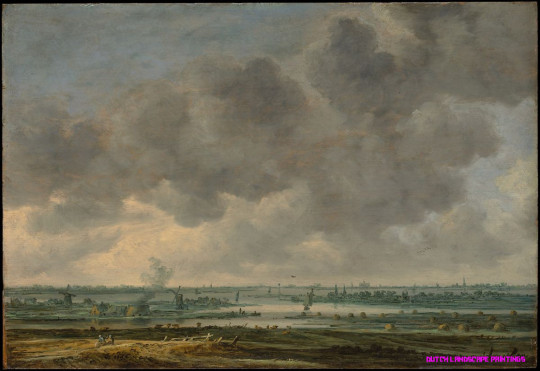
Landscape Painting in the Netherlands | Essay | The Metropolitan .. | dutch landscape paintings

Landscapes in oil paint and watercolor; landscape paintings .. | dutch landscape paintings

Let’s go for a Walk: Dutch Landscape Painting in the 25th Century – dutch landscape paintings | dutch landscape paintings
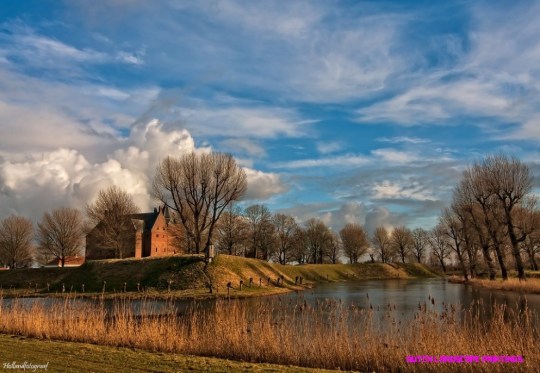
paintersjob – dutch landscape paintings | dutch landscape paintings

Image result for 25th century dutch landscape paintings (With .. | dutch landscape paintings

Dutch Polder Landscape, Art Painting by Johan Hendrik Weissenbruch – dutch landscape paintings | dutch landscape paintings
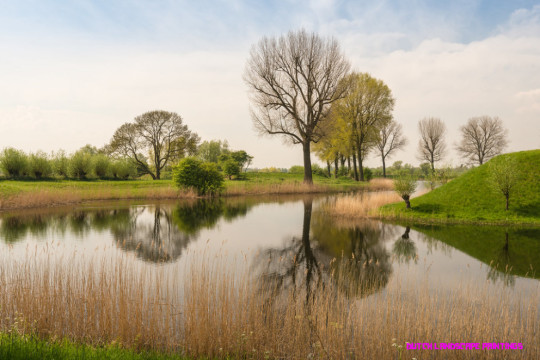
Idyllic Dutch landscape in springtime – dutch landscape paintings | dutch landscape paintings
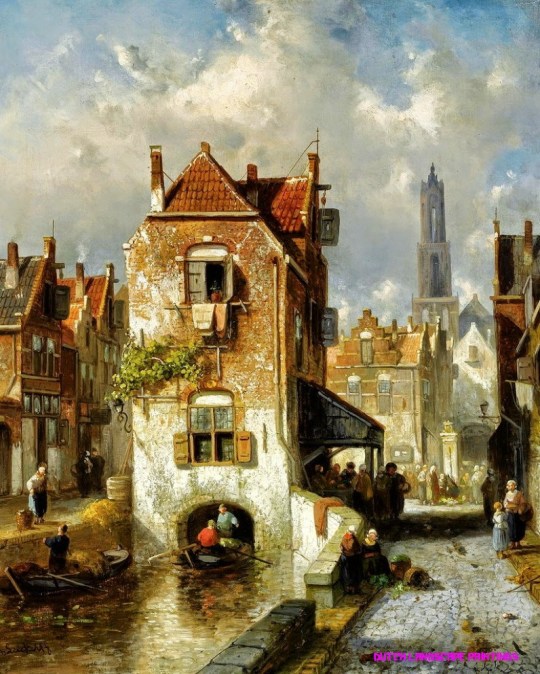
Charles Leickert | Romantic Landscape painter | Tutt'Art .. | dutch landscape paintings
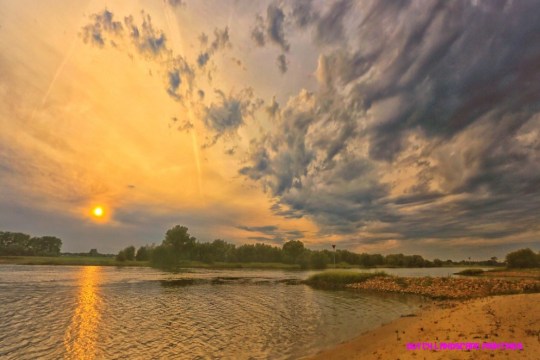
sunset sky – dutch landscape paintings | dutch landscape paintings
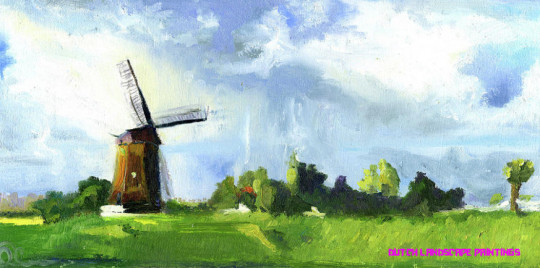
Dutch Landscape by Lelia Sorokina – dutch landscape paintings | dutch landscape paintings

Spencer Alley: 17th-century Paintings from the Netherlands – dutch landscape paintings | dutch landscape paintings
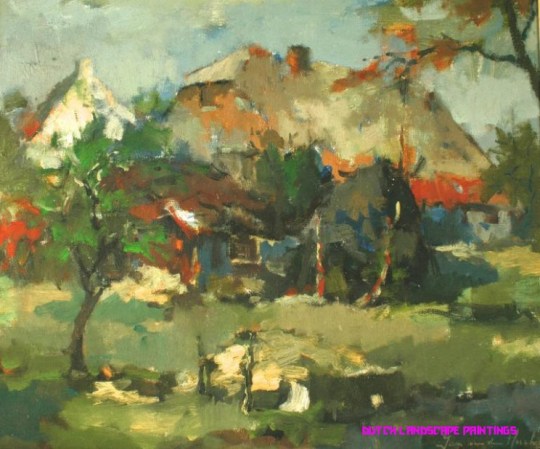
Dutch Landscape Painting by Jan Van Den Hurk, Mid-25th c – dutch landscape paintings | dutch landscape paintings
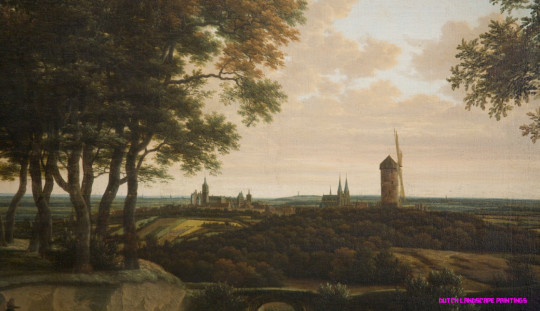
Upcoming Events Dutch Landscapes from the Golden Age – dutch landscape paintings | dutch landscape paintings

17th Century Dutch Oil Painting Landscape, School of Jacob .. | dutch landscape paintings

Landscape at Sunset. Artist: Aert van der Neer (Dutch, Gorinchem .. | dutch landscape paintings
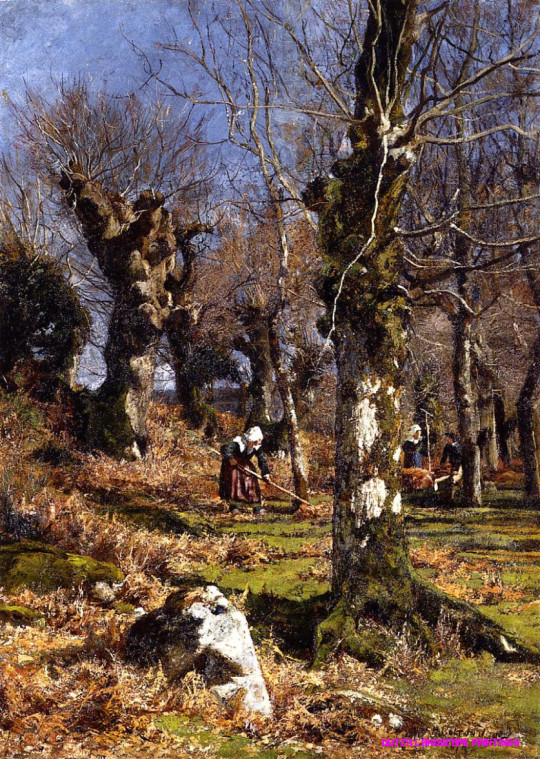
19th century American Paintings: Hugh Bolton Jones – dutch landscape paintings | dutch landscape paintings
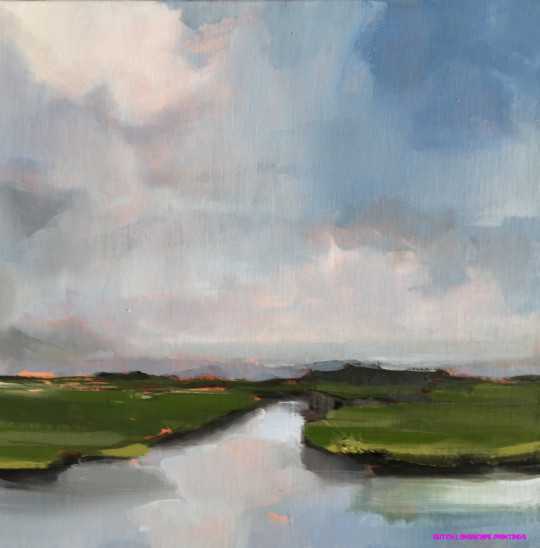
Dutch Accent Gallery — Dutch landscape painting by artist Stella.. | dutch landscape paintings

Dutch winter landscape by Charles Leickert – dutch landscape paintings | dutch landscape paintings

William Edward Webb (1862-1903), Peel Harbour, Isle of Man .. | dutch landscape paintings
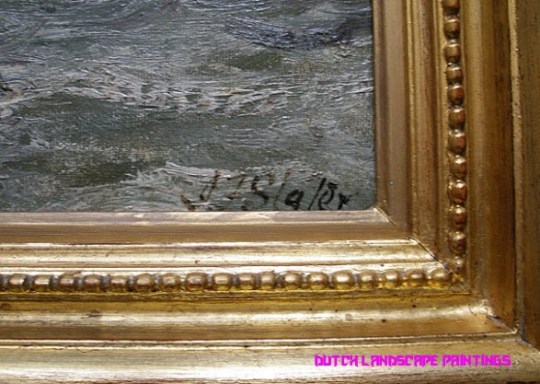
John Falconer Slater (1857 – 1937), A Calm Sea for sale – dutch landscape paintings | dutch landscape paintings

Nature in art: Defined and processed | dutch landscape paintings

Painting titled ‘View of Dordrecht’ by Aelbert Cuyp (25-25 .. | dutch landscape paintings

Gallery Talk: 25th-Century Dutch Landscape Painting | Harvard Art .. | dutch landscape paintings
Painter Legend https://i1.wp.com/www.painterlegend.com/wp-content/uploads/2020/06/tulips-and-sky-dutch-landscape-paintings.jpg?fit=993%2C679&ssl=1
0 notes
Photo
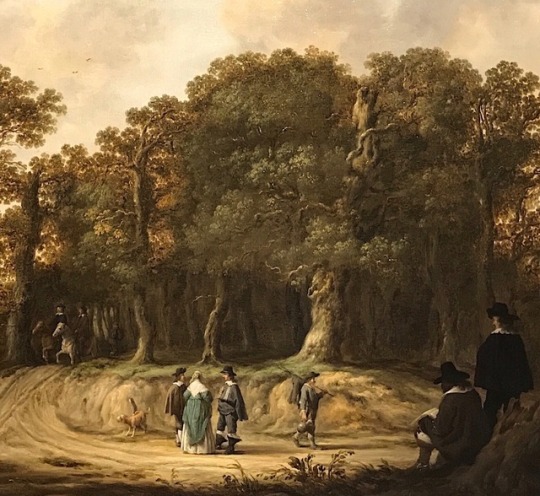
Wooded Landscape with an Artist, c. 1643, oil on canvas
(Aelbert Cuyp, Dutch, 1620-1691)
1 note
·
View note
Text
How Old Landscape Painters Can Increase Your Profit! | old landscape painters
How Old Landscape Painters Can Increase Your Profit! | old landscape painters – old landscape painters
| Welcome to be able to our blog site, on this moment We’ll explain to you concerning keyword. And today, here is the initial photograph:
Landscape painting – Wikipedia – old landscape painters | old landscape painters
How about photograph preceding? will be that will incredible???. if you feel so, I’l l demonstrate many impression again below:
So, if you desire to get these great pictures related to (How Old Landscape Painters Can Increase Your Profit! | old landscape painters), just click save icon to store these images to your personal computer. These are ready for down load, if you’d rather and want to grab it, just click save symbol on the post, and it will be immediately saved in your home computer.} Finally if you would like obtain new and the latest photo related to (How Old Landscape Painters Can Increase Your Profit! | old landscape painters), please follow us on google plus or save this blog, we attempt our best to present you regular update with all new and fresh shots. Hope you love staying here. For most updates and latest news about (How Old Landscape Painters Can Increase Your Profit! | old landscape painters) images, please kindly follow us on tweets, path, Instagram and google plus, or you mark this page on book mark area, We attempt to offer you up grade regularly with fresh and new images, like your browsing, and find the perfect for you.
Thanks for visiting our website, contentabove (How Old Landscape Painters Can Increase Your Profit! | old landscape painters) published . At this time we’re pleased to announce that we have discovered an extremelyinteresting contentto be discussed, namely (How Old Landscape Painters Can Increase Your Profit! | old landscape painters) Many people looking for info about(How Old Landscape Painters Can Increase Your Profit! | old landscape painters) and certainly one of them is you, is not it?
24 Most Famous Landscape Artists And Their Masterpieces | Learnodo … – old landscape painters | old landscape painters
Houses in the field – old landscape painters | old landscape painters
89 best Cropsey (Jasper Francis Cropsey) images on … – old landscape painters | old landscape painters
River Landscape with Horseman and Peasants by Aelbert Cuyp … – old landscape painters | old landscape painters
Chinese Landscape Painting – Chinese Art – The Art History Archive – old landscape painters | old landscape painters
Old Barn Nevada McNett Ranch Landscape Original Realistic … – old landscape painters | old landscape painters
Landscape painting – Wikipedia – old landscape painters | old landscape painters
old japanese landscape paintings – Google Search | Landscape Mimic … – old landscape painters | old landscape painters
famous landscape painters – Google Search | Mother Nature … – old landscape painters | old landscape painters
Kay Walton "Along The Old Boundary", 40×30, $4,800.00 … – old landscape painters | old landscape painters
Landscape Painting: Characteristics, History – old landscape painters | old landscape painters
24+ Exceptional Old Masters Landscape Paintings – Landscape – Drawing … – old landscape painters | old landscape painters
Hand Painted Old Oil Paintings Reproduction Famous … – old landscape painters | old landscape painters
Old Masters Landscape Oil Painting – Defendbigbird.com – old landscape painters | old landscape painters
Italian Travel Art Watercolor Print Italian landscape … – old landscape painters | old landscape painters
Free Download: Landscape Painting – old landscape painters | old landscape painters
24 Most Famous Landscape Artists And Their Masterpieces | Learnodo … – old landscape painters | old landscape painters
260/365 – Where She Found the Head In the Box – old landscape painters | old landscape painters
Old Masters Landscape Oil Painting – Defendbigbird.com – old landscape painters | old landscape painters
The old water mill, oil painting, landscape painting, water, mill … – old landscape painters | old landscape painters
LANDSCAPE IN THE BLACK FOREST – Auktionshaus Lempertz – old landscape painters | old landscape painters
Alpine Landscape with Glacier – Auktionshaus Lempertz – old landscape painters | old landscape painters
Landscape Painting Holiday in the Peak District – old landscape painters | old landscape painters
from WordPress https://landscapeusa.club/how-old-landscape-painters-can-increase-your-profit-old-landscape-painters/
0 notes
Text
#FineArtFriday: View of Dordrecht by Aelbert Cuyp, ca. 1665
View of Dordrecht *oil on canvas *97.8 x 137.8 cm *signed b.r.: A cuyp *circa 1655
Artist: Aelbert Cuyp (1620–1691)
Title: View of Dordrecht
Date: circa 1665
Genre: marine art
Medium: oil on canvas
Size: 97.8 x 137.8 cm
Inscription: signature, A Cuyp
Collection: Kenwood House
What I love about this painting:
We see history in action, a working harbor alive and bustling with activity beneath a…

View On WordPress
1 note
·
View note